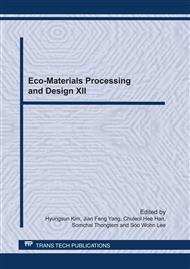p.219
p.223
p.227
p.231
p.235
p.239
p.243
p.247
p.251
Effect of Particle Size Distribution on the Workability of Alumina-Based Castable Refractories
Abstract:
Slagging coal gasifiers operate at temperatures as high as 1650°C in a reducing environment so that combustion chambers are lined with high chromia refractories. The quality of these refractories applied on IGCC should be a key factor that affects the entire cost of electric power production. In this study, low cost chromia-alumina castables were chosen as candidate refractories for IGCC. To enhance the workability of chromia-alumina castables, ultrafine alumina powder was added to improve the workability. It’s proved that the specific surface area and particles size distribution of ultrafine powders in matrix part greatly affect the flow values and microstructures.
Info:
Periodical:
Pages:
235-238
Citation:
Online since:
July 2011
Authors:
Keywords:
Price:
Сopyright:
© 2011 Trans Tech Publications Ltd. All Rights Reserved
Share:
Citation:


